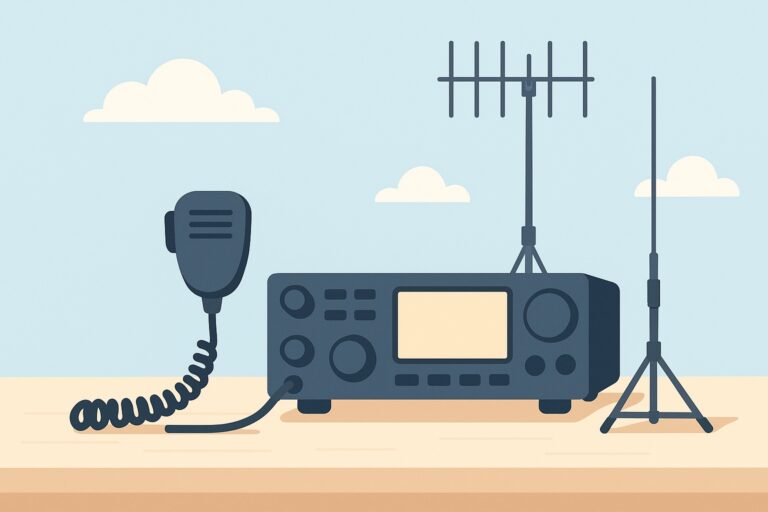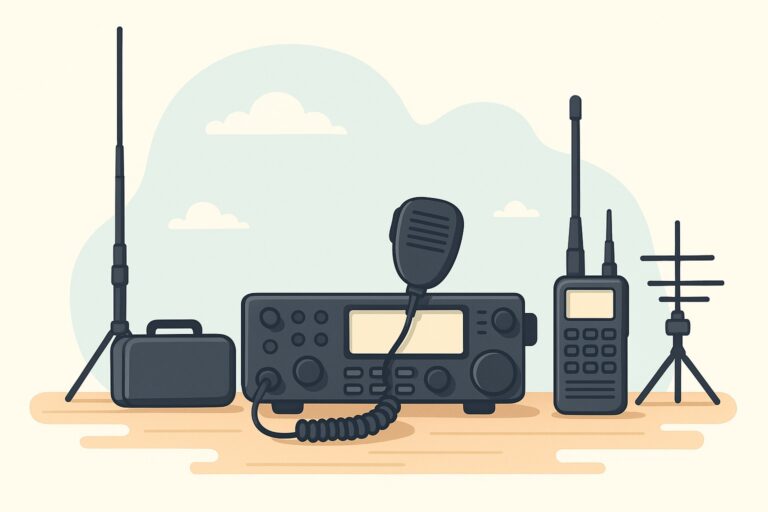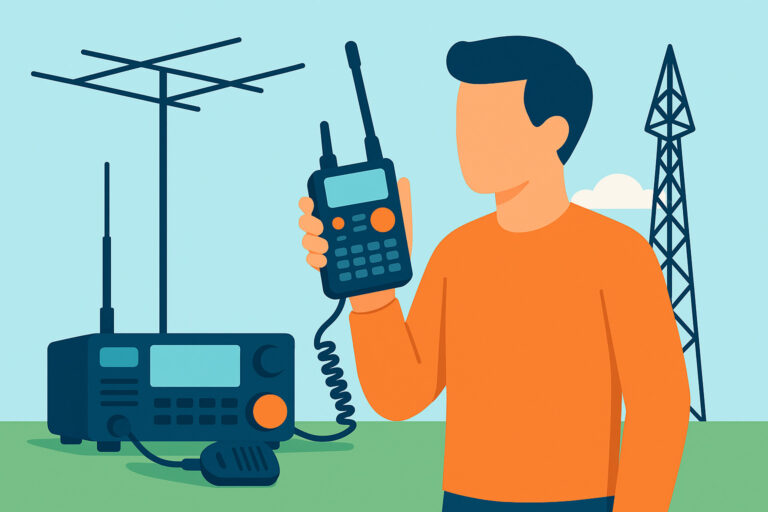Baluns vs. Ununs: When and Why to Use Them
For every ham radio enthusiast, understanding the components that optimize your antenna system is crucial for reliable contacts and reduced interference. Two key players in this realm are baluns and ununs, both essential in matching feed lines to antennas and ensuring your station runs smoothly. But what exactly are these devices, how do they differ, and how do you know which one to use? In this comprehensive guide, we’ll explore the fundamental differences, applications, and decision points between baluns and ununs so you can make the best choice for your ham radio setup.
Baluns vs. Ununs: When and Why to Use Them
Introduction to Baluns and Ununs
Antennas and feed lines are at the heart of every radio station, connecting your transmitter to the outside world. However, these two components can have very different electrical characteristics—some are balanced, while others are unbalanced. That’s where baluns and ununs come into play. These passive devices are designed to bridge the gap between differing types of circuits, improve signal quality, and minimize unwanted radiation or loss.
Baluns and ununs both serve as transformers, but their specific functions and use-cases differ. Understanding their operation will help you avoid common pitfalls like RF exposure, poor matching, or interference that can degrade your operating experience. Whether you’re building a new antenna system or optimizing an existing one, knowing when and why to use a balun or unun is a skill that pays dividends in performance and reliability.
Throughout this article, we’ll break down what each device is, how it works, and where it fits best in your station. We’ll also dispel a few myths and give you the confidence to select the right transformer for your next project, referencing key facts and the expert insights you’ll find at https://hamradioplayground.com.
Understanding Baluns: Function and Applications
The term “balun” stands for “balanced to unbalanced,” and this elegantly describes its core function. Baluns are designed to convert between balanced and unbalanced circuits, ensuring a balanced pair of terminals on the antenna side. In practical terms, a balanced antenna like a dipole has two symmetrical elements, while most feed lines—such as coaxial cable—are unbalanced, with one conductor grounded.
Without a balun, connecting a coaxial feed line directly to a balanced antenna can cause several issues. It can result in unwanted RF currents flowing on the outside of the feed line, leading to interference, radiation from the feed line, and even erratic SWR readings. By introducing a balun, you not only match the circuit types but also prevent these unwanted effects, resulting in cleaner signals and more efficient power transfer.
There are several types of baluns, each suited to different applications. For example, a 1:1 balun is used to transform a balanced or symmetrical antenna to an unbalanced or unsymmetrical feed line. This is the most common scenario when feeding a dipole antenna with coax. Other types, such as 4:1 or 9:1 baluns, provide impedance transformation in addition to converting between balanced and unbalanced circuits.
Baluns can be constructed using various technologies, including coaxial and stripline designs. Some use ferrite cores, while others employ air-wound or toroidal transformers. The choice of design affects the balun’s bandwidth, power handling, and losses. Finally, it’s important to remember that baluns are essential for systems where a single-ended amplifier drives a balanced load, such as dipole antennas.
Exploring Ununs: Purpose and Use Cases
While baluns handle the transition between balanced and unbalanced circuits, ununs perform a different—yet equally important—role in ham radio systems. Ununs are used for impedance matching between two unbalanced circuits, connecting the antenna side directly to the ground. This makes them ideal for situations where both the antenna and the feed line are unbalanced, such as when using vertical antennas or end-fed wires fed with coax.
The primary function of an unun is to match the impedance of the feed line to that of the antenna, minimizing SWR and maximizing power transfer. For example, a typical feed line might be 50 ohms, while a random wire or other unbalanced antenna could have a much higher or lower impedance. This is where ununs shine: Ununs typically come in ratios like 4:1 or 9:1, helping match unbalanced antennas to feedlines.
Ununs are also valuable when you want to feed an unbalanced antenna with an unbalanced feed line without introducing the complications of a balanced system. A 1:1 unun is used to connect an unbalanced feed line to an unbalanced antenna like a vertical, J-pole, off-center fed dipole, or inverted L. With the right ratio, you can easily adapt your station to work with a variety of antennas and reduce the risk of unwanted RF on your equipment.
Like baluns, ununs can be built with different transformer designs, such as toroidal cores or air-wound coils. They are compact, efficient, and often found inside commercial matching units or remote antenna tuners. By choosing the correct unun for your application, you ensure optimal performance and protect your transmitter from damaging reflected power.
Key Differences Between Baluns and Ununs
At first glance, baluns and ununs may appear similar—they both use transformers to adapt circuits and improve antenna performance. However, their functions and construction are distinct. The most fundamental difference is the type of circuits they connect:
- Baluns bridge a balanced device (like a center-fed dipole) with an unbalanced one (like coaxial feed line).
- Ununs connect two unbalanced devices, such as a coaxial feed line to a vertical or end-fed wire antenna.
This distinction is crucial for choosing the right device. Baluns are about symmetry, ensuring the antenna currents are equal and opposite, while ununs are about impedance transformation between mismatched unbalanced circuits.
To summarize the main differences:
- Baluns:
- Convert between balanced and unbalanced circuits
- Prevent unwanted RF on the feed line
- Commonly used with dipoles and other balanced antennas
- Offer various transformation ratios (1:1, 4:1, etc.)
- Ununs:
- Match impedance between unbalanced circuits
- Connect directly to ground on the antenna side
- Used with verticals, end-fed wires, off-center fed dipoles, and other unbalanced antennas
- Common ratios are 1:1, 4:1, and 9:1
Understanding these differences allows you to select the right transformer and avoid the pitfalls of misapplication, such as increased noise, RF feedback, or poor matching.
Choosing the Right Device for Your Antenna System
With the fundamentals covered, the next challenge is determining which device best suits your station’s needs. The decision depends on the type of antenna, feed line, and the nature of the circuit you’re connecting.
Ask yourself the following questions:
- Is my antenna balanced or unbalanced? If you’re using a dipole, loop, or similar symmetric design, it’s balanced. Verticals, end-fed wires, and many wire antennas are unbalanced.
- Is my feed line balanced or unbalanced? Coaxial cable is unbalanced, while ladder line or twin-lead is balanced.
- Do I need to transform impedance? If your antenna’s impedance is close to your feed line’s (50 or 75 ohms), a 1:1 device may suffice. For higher or lower impedance antennas, choose an appropriate ratio (4:1, 9:1, etc.).
Here’s a simple guide to help you decide:
- Dipole antenna with coaxial feed line: Use a 1:1 balun to connect the unbalanced coax to the balanced dipole and prevent feed line radiation.
- Off-center fed dipole or end-fed antenna with coax: Depending on the feed point impedance, a 4:1 or 9:1 unun may be appropriate, as these antennas are often unbalanced and have higher impedance.
- Vertical antenna with coax: Use a 1:1 unun to connect the unbalanced feed line to the unbalanced antenna, especially if ground radials are present.
- Feeding a dipole with ladder line: Typically no balun is needed at the antenna feed point, but a 4:1 or 1:1 balun may be used at the transition to coax inside the shack.
Remember, a 1:1 balun is used to transform a balanced or symmetrical antenna to an unbalanced or unsymmetrical feed line, while a 1:1 unun is used to connect an unbalanced feed line to an unbalanced antenna like a vertical, J-pole, off-center fed dipole, or inverted L. For higher impedance mismatches, select the appropriate ratio unun.
If you’re ever unsure, consult resources like https://hamradioplayground.com or experiment with trusted commercial products before building your own. Always verify your setup with an antenna analyzer to ensure optimal SWR and minimal loss.
Conclusion: Optimizing Antenna Performance with Baluns and Ununs
Baluns and ununs are indispensable tools in the ham radio operator’s toolkit, each serving a unique function in connecting antennas and feed lines. By understanding their differences and proper applications, you’ll enjoy cleaner signals, fewer RF problems, and a more efficient station. As you design your next antenna system, remember to choose the right transformer for the job—your contacts and signal reports will thank you!







